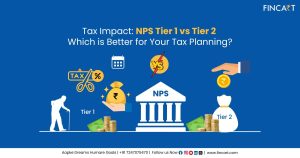The Finance Minister, Nirmala Sitharaman, presented the Interim Union Budget for the financial year 2024-25 in Parliament on 1st Feb, 2024. This marks her sixth budget and is the final one for the second term of the government led by Prime Minister Narendra Modi. The complete budget is scheduled to be presented in July after the Lok Sabha Elections, once the new government is in place.
The budget primarily emphasized fiscal consolidation, infrastructure development, agriculture, innovation, and railways. However, there were no alterations to the tax rates, which left salaried individuals disappointed.
Let’s take a look at some of the key highlights from the budget:
Fiscal Deficit
To show commitment to fiscal discipline, the Finance Minister, Nirmala Sitharaman announced that the fiscal deficit for the financial year 2024-25 has been set at 5.1% of the GDP – lower than estimated. This is as part of the Government’s efforts to reduce fiscal consolidation and to achieve its target of reducing the deficit below 4.5% by 2025-26.
Meanwhile, the capex for the FY 2024-25 has been increased to ₹11.1 trillion, marking an 11% increase from the previous year.
Ayushman Bharat
Stressing on the empowerment of the poor and the middle class, the FM announced that healthcare coverage under Ayushman Bharat will be extended to all Accredited Social Health Activist (ASHA) workers, Anganwadi workers, and helpers. The aim is to provide free access to health insurance coverage for low-income earners in the country.
Tax structure
No changes have been proposed in the direct or indirect tax regime, with the tax rates continuing to be the same as before.
Pending tax demands
In the budget, the FM proposed to withdraw outstanding direct tax demands dating back to years and decades ago. It has been proposed to withdraw such outstanding direct tax demands up to ₹25,000 for periods up to 2009-10 and up to ₹10,000 for the period spanning from 2010-11 to 2014-15.
Railways
In a significant announcement, the FM unveiled plans to convert 40,000 regular rail bogies into Vande Bharat, aiming to enhance the safety, convenience, and comfort of passengers. Additionally, three new corridors have been introduced for the railways: the Energy, Mineral, and Cement corridor; the Port Connectivity Corridor; and a High Traffic Density Corridor.
‘Lakhpati Didi’ Scheme
During the presentation of the interim Budget 2024, Union Finance Minister Nirmala Sitharaman announced an expansion of the government’s “Lakhpati Didi” scheme, increasing the target from 2 crore women to 3 crore women. The initiative has already empowered nearly 1 crore women to achieve the ‘Lakhpati Didi’ status. The scheme focuses on encouraging women to establish micro-enterprises within their villages, with a primary objective of providing training to women in self-help groups. The aim is to enable them to generate a sustainable income, ensuring they earn at least Rs 1 lakh per annum through their ventures.
Cervical cancer vaccination
While presenting the budget, the FM announced that the government will encourage vaccination of girls in the age group of 9-14 years to prevent cervical cancer.
PM Awas Yojana
The FM stated that despite the challenges posed by the COVID-19 pandemic, the implementation of the PM Awas Yojana (Grameen) has persisted, and the central government is on the verge of realizing its target of 3 crore houses. The government originally aimed to construct three crore pucca houses by March 2024. Now, the FM announced that an additional 2 crore houses will be taken up in the next five years to address the growing demand due to an increase in the number of families.
Free Electricity
FM Nirmala Sitharaman announced a great initiative that 10 million households will be provided with up to 300 units of free electricity each month through rooftop solarization. This scheme aligns with the Prime Minister’s commitment, as expressed on the historic occasion of the inauguration of Shri Ram Mandir in Ayodhya.
Electric vehicles
The government plans to boost the electric vehicle (EV) ecosystem by supporting manufacturing and charging infrastructure. It also plans to encourage greater adoption of e-buses for public transport networks. The aim is to substantially expand the EV ecosystem, particularly by increasing the number of charging stations.
Technology
The FM announced a corpus of rupees one lakh crore will be established with a fifty-year interest-free loan to boost innovation. This fund will offer long-term financial support or refinancing with extended periods and low or no interest rates. The idea is to motivate private businesses to increase their efforts in research and innovation, especially in emerging and promising areas.
Tourism
The government is committed to boosting tourism in India for both domestic and international visitors. In the budget speech, the finance minister announced the provision of interest-free loans to states for the development and promotion of tourist spots. She emphasized on promoting Lakshadweep as a prime tourist destination.
The three highlighting points of the Budget from Capital Market Perspective were as follows:
- Economic Growth – The budget focuses on economic growth by addressing what was mentioned as the 4 Pillars – Poor, Women, Youth and the Breadwinners. The government is looking at a nominal GDP growth rate of 10.5% with the revenue growth estimated to grow at 11.3%; which is conservative estimate and gives us a lot of confidence.
- Fiscal Management – The forecasted fiscal deficit of FY24 is revised to 5.8% from the earlier forecasted number of 5.9%, which is good. The estimated fiscal deficit for FY 25 is 5.1%. This is in line with the government’s effort to get the fiscal deficit to 4.5%. The total estimated Expenditure is estimated at 47.66 Lac Crores, with the Gross Tax Collections at 38.30 Lac Crores. The lower fiscal deficit and a conservative revenue estimate is quite comforting bringing down the government borrowing program below what the market expected.
- Capital Expenditures – The thrust of Capital Expenditures continues. Despite being the election year, the government has stayed away from throwing freebies. The government continues to drive economic growth by increased allocation to Infrastructure. The government allocated 11.11 Lac Crore that will be prudently spent towards Rail, Aviation, Metro and Green Energy.
Overall the government remains on track to drive economic recovery post covid.
Having said that, I would like to highlight that the budget remains just an event. One must focus on their personal portfolio and budgets.




